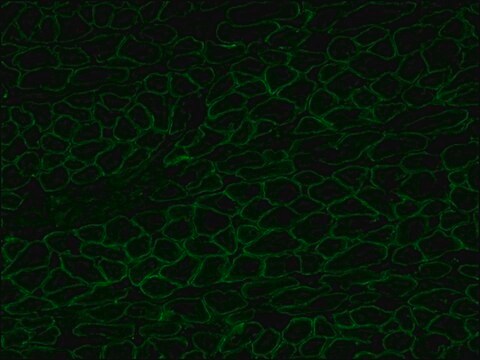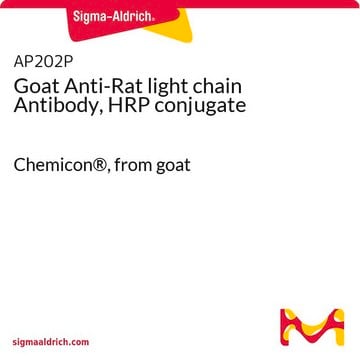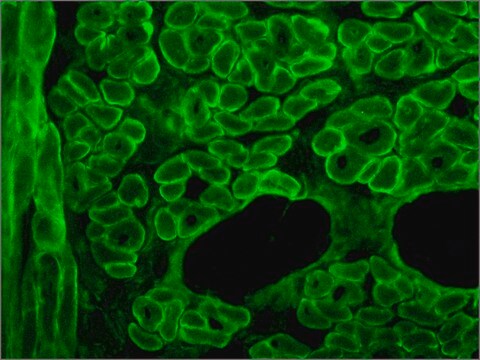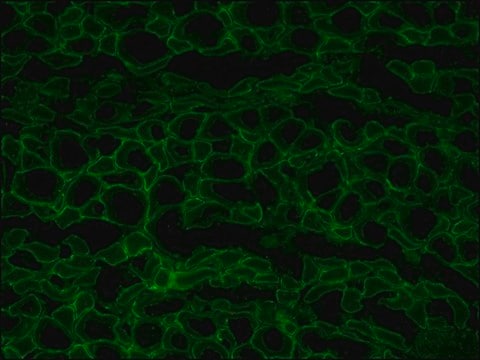MABT827
Anti-Dystrophin Antibody, clone 2C6 (MANDYS106)
clone 2C6 (MANDYS106), from mouse
Synonym(s):
Dystrophin
About This Item
Recommended Products
biological source
mouse
Quality Level
antibody form
purified antibody
antibody product type
primary antibodies
clone
2C6 (MANDYS106), monoclonal
species reactivity
human
technique(s)
immunofluorescence: suitable
immunohistochemistry: suitable
western blot: suitable
isotype
IgG2aκ
NCBI accession no.
UniProt accession no.
shipped in
wet ice
target post-translational modification
unmodified
Gene Information
human ... DMD(1756)
General description
Specificity
Immunogen
Application
Immunofluorescence Analysis: A represenative lot was employed together with a spectrin antibody in dual immunofluorescent sarcolemma staining for assessing dystrophin levels of muscle fiber cells in muscle biopsies from healthy donors and Becker muscular dystrophy (BMD) patients (Beekman, C., et al. (2014). PLoS One. 9(9):e107494).
Cell Structure
Adhesion (CAMs)
Quality
Immunohistochemistry Analysis: A 1:50 dilution of this antibody detected Dystrophin in human skeletal muscle myocytes.
Target description
Physical form
Storage and Stability
Other Notes
Disclaimer
Not finding the right product?
Try our Product Selector Tool.
recommended
Storage Class Code
12 - Non Combustible Liquids
WGK
WGK 1
Flash Point(F)
Not applicable
Flash Point(C)
Not applicable
Certificates of Analysis (COA)
Search for Certificates of Analysis (COA) by entering the products Lot/Batch Number. Lot and Batch Numbers can be found on a product’s label following the words ‘Lot’ or ‘Batch’.
Already Own This Product?
Find documentation for the products that you have recently purchased in the Document Library.
Customers Also Viewed
Our team of scientists has experience in all areas of research including Life Science, Material Science, Chemical Synthesis, Chromatography, Analytical and many others.
Contact Technical Service









